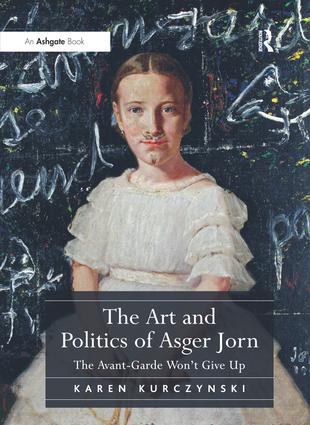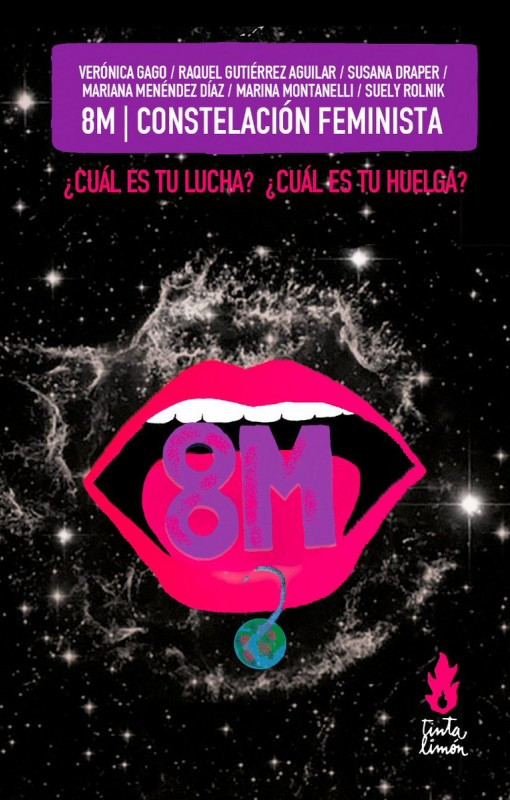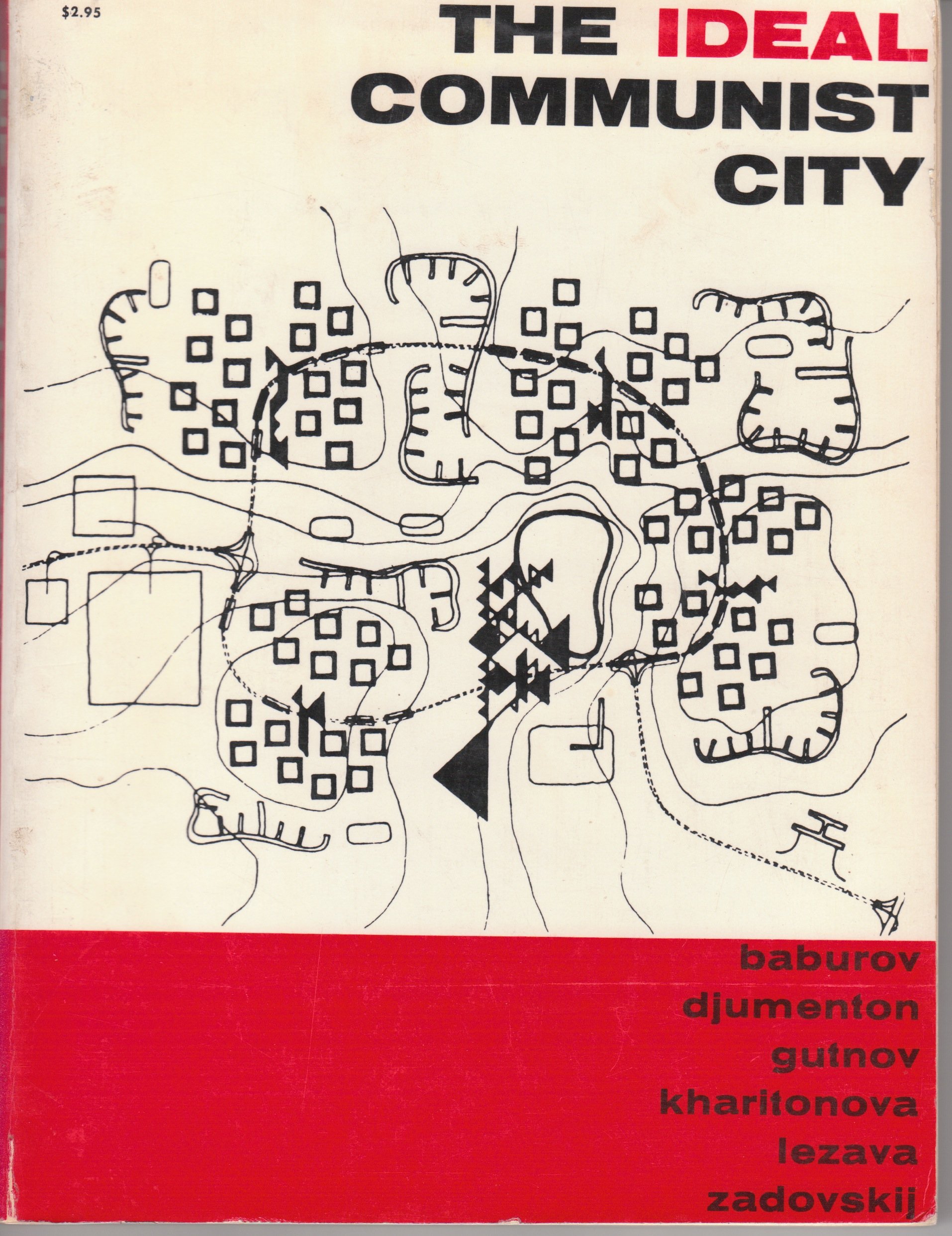Karen Kurczynski: The Art and Politics of Asger Jorn: The Avant-Garde Won’t Give Up (2014)
Filed under book | Tags: · art history, avant-garde, biography, cobra, situationists, surrealism

“Danish artist Asger Jorn has long been recognized for his founding contributions to the Cobra and Situationist International movements – yet art historical scholarship on Jorn has been sparse, particularly in English. This study offers a synthetic account of the essential phases of this artist’s career. It addresses his works in various media alongside his extensive writings and his collaborations with various artists’ groups from the 1940s through the mid-1960s. Situating Jorn’s work in an international, post-Second World War context, Karen Kurczynski reframes our understanding of the 1950s, away from the Abstract-Expressionist focus on individual expression, toward a more open-ended conception of art as a public engagement with contemporary culture and politics.”
Publisher Ashgate, 2014
ISBN 9781409431978, 1409431975
xiii+261 pages
via Situationist Library
PDF (13 MB)
Comment (0)8M Constelación feminista. ¿Cuál es tu lucha? ¿Cuál es tu huelga? (2018) [Spanish, German]
Filed under book | Tags: · feminism, protest, social movements, strike, women

“?Una apuesta a la política del deseo que sentimos está tomando las calles y qué nos impulsa a pensar la transformación radical como revolución existencial?. En las primeras páginas, Veronica Gago evoca a Rosa Luxemburgo para señalar la creación de pensamiento político desde la huelga.
Ver esta huelga como proceso, como parte de un tiempo de rebelión que recrea la forma de hacer y pensar la política. Este libro es parte de esa praxis, contiene reflexiones vivas de un proceso abierto. Pone en negro sobre blanco experiencias vividas, comparte claves de análisis para mirar este momento de lucha de las mujeres. Desde Argentina, Uruguay, México, Italia y Estados Unidos, escriben Veronica Gago, Mariana Menéndez Díaz, Raquel Gutierréz Aguilar, Marina Montanelli y Susana Draper. Suely Rolnik desde Brasil es entrevistada por Marie Bardet. Todas ellas hablan desde su participación activa y apuestan por pensar desde las luchas.
Los textos parecen una conversación entre las autoras, cada una habla desde un territorio y una realidad con rasgos especificos. Pensar México no es lo mismo que reflexionar desde el Río de la Plata, porque el primero es un país donde existe una guerra contrainsurgente ampliada1, y es en ese contexto donde se despliega la lucha de las mujeres. Sin embargo, de modo sorprendente, encontramos grandes resonancias sur-norte, y fuera y dentro de América Latina. Resaltan como coincidencias, la lucha contra la violencia, perspectivas comunes entorno al trabajo entendido de modo amplio, miradas complejas sobre las dominaciones múltiples.
Es un libro pequeño hecho para la batalla por los sentidos. Útil para organizar conversatorios2, indagar cómo resuena, devolverlo a la lucha, porque de allí nació.”
8M Constelación feminista. ¿Cuál es tu lucha? ¿Cuál es tu huelga?
By Verónica Gago, Raquel Gutiérrez Aguilar, Susana Draper, Mariana Menéndez Díaz, Marina Montanelli, Marie Bardet, Suely Rolnik
Publisher Tinta Limón, Buenos Aires, 2018
ISBN 9789873687372
131 pages
German edition
Translated by Michael Grieder and Gerald Raunig
Foreword by Isabell Lorey
Publisher transversal texts, Vienna, 2018
ISBN 9783903046184, 3903046183
155 pages
Review: Candela Comméres Benejam (Crítica y resistencias, 2018, ES).
Strike website
Publisher (ES)
Publisher (DE)
WorldCat
PDF, PDF (Spanish, added on 2020-11-13)
PDF, PDF, EPUB, EPUB (German)
Alexei Gutnov, et al: The Ideal Communist City (1966–) [RU, EN]
Filed under book | Tags: · architecture, city, communism, constructivism, marxism, urban planning, urbanism

“The Soviet group of architects New Element of Settlement (NER) was invited to the 1968 Milan Triennale by Giancarlo De Carlo, following the publication of their influential book NER, On the Way to a New City (1966). They were asked to present their plans for an ideal communist city in the section devoted to “transformations of the physical environment.” Their installation was one of the few in the exhibition that provided a critical response to the culture of consumerism, in tune with ongoing student revolts.
The concept of NER was first developed in 1957 as a diploma project by graduates of the Moscow Institute of Architecture (MArkhI). As students, NER members studied the elements of the city, its quantitative and qualitative characteristics, eventually dismissing traditional planning principles in favor of a new approach to urban development as a dynamic process. Drawing on Marxism, they sought to provide a spatial agenda for the communist ideology, representing the younger generation of thinkers in the radical split of the Soviet architectural profession following de-Stalinization. They actively criticized the state of Soviet urban planning, arguing that “today, the city is not fulfilling its primary purpose to be an organic living environment.”
In late 1968, De Carlo wrote an introduction for NER’s influential publication, The Ideal Communist City. In their radical proposal, NER attempted to provide a spatial agenda for Marxism, drawing both from the Communist Manifesto and the Constructivist avant-garde of the 1920s. NER’s new city was based on creative communication in a classless society, in which the city was no longer dependent on its industrial center but instead formed around a center of communication, independent from the economic characteristics of the city. The major shift brought in by this new urban wave—later implemented by one of its members, Alexei Gutnov, within the curriculum of MArkhI—was to see the city as a living organism, in which cells would be born and eventually die. This led to a change in the status of architectural form: it was conceived as temporary and mobile—its birth implied the process of its imminent destruction. This approach anticipated the later understanding of architecture as an activity or as environment—form was no longer relevant because it hindered the organic processes within the dying city. The system emphasized the correspondence between urban structures and social relationships in communism, based on the reading of the urban plan as “simultaneously a symbol of the idea and a program for its realization.”” (Masha Panteleyeva, Radical Pedagogies)
English edition
By Alexei Gutnov, A. Baburov, G. Djumenton, S. Kharitonova, I. Lezava, S. Sadovskij, of Moscow University
Translated by Renee Neu Watkins
Preface by Giancarlo de Carlo
Publisher George Braziller, New York, [1971]
i Press Series on the Human Environment
ISBN 080760576X 9780807605769
166 pages
via Outlaw Urbanist
Reviews: Kenneth Frampton (Architectural Forum, 1972), Outlaw Urbanist (2016).
Commentary: Alicia Kurimska (Center for Opportunity Urbanism, 2015).
Novyy element rasseleniya: na puti k novomu gorodu (Новый элемент расселения: на пути к новому городу, Russian, 1966, 22 MB, via)
The Ideal Communist City (English, trans. Renee Neu Watkins, [1971], 4 MB)

